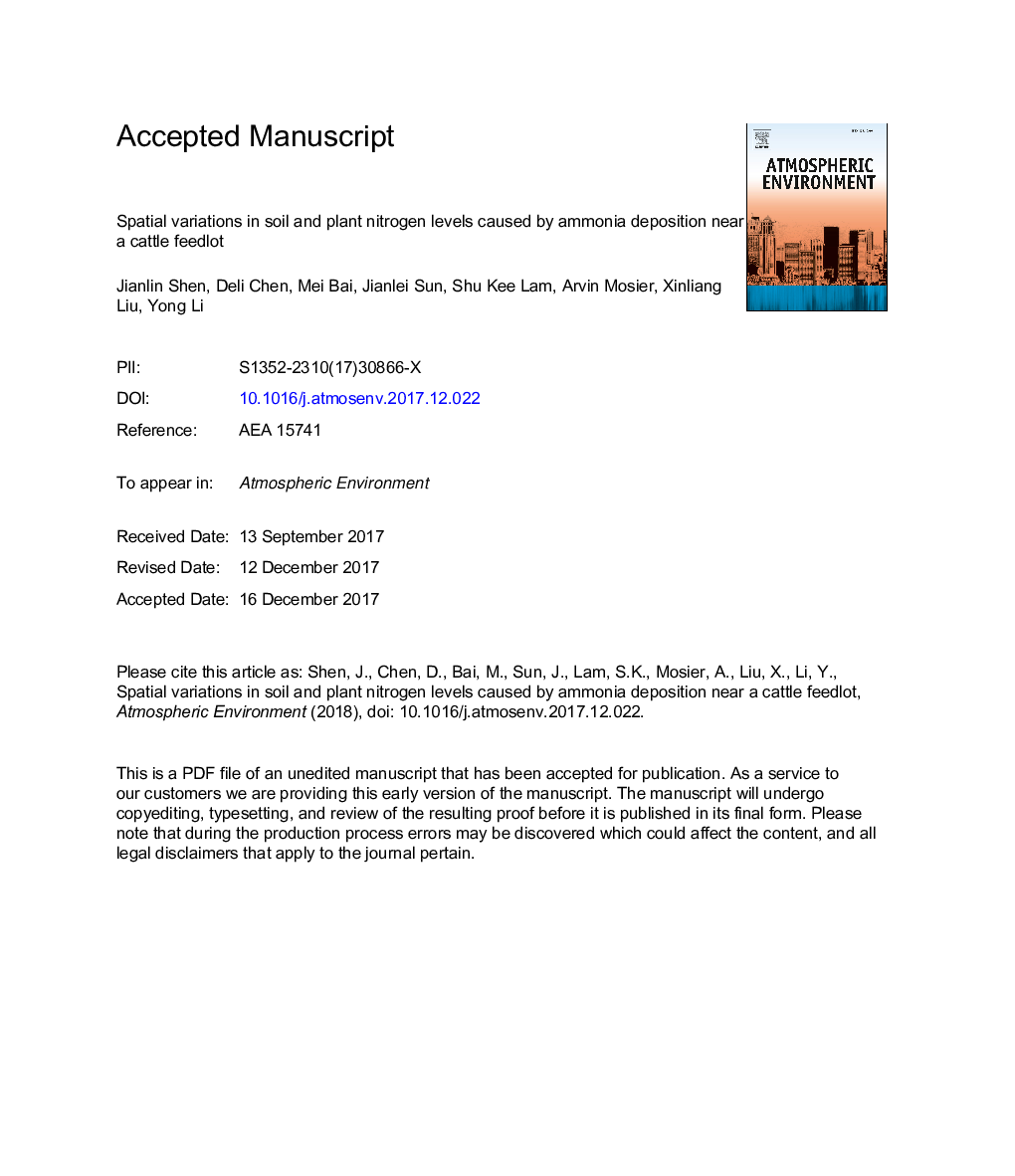| Article ID | Journal | Published Year | Pages | File Type |
|---|---|---|---|---|
| 8864156 | Atmospheric Environment | 2018 | 33 Pages |
Abstract
Cattle feedlots are significant ammonia (NH3) emission sources, and cause high NH3 deposition. This study was conducted to investigate the responses of soil mineral nitrogen (N), percent cover of plant species, leaf N content, and leaf δ15N to NH3 deposition around a 17,500-head cattle feedlot in Victoria, Australia. Soil samples were collected in May 2015â¯at 100-m intervals along eight downwind transects, and plant samples were collected in June 2015 from five sites at 50- to 300-m intervals along a grassland transect within 1â¯km downwind of the feedlot. NH3 deposition was also monitored at five sites within 1â¯km downwind of the feedlot. The estimated NH3-N deposition rates ranged from 2.9â¯kgâ¯N haâ1 yrâ1 at 1â¯km from the feedlot to 203â¯kgâ¯N haâ1 yrâ1 at 100â¯m from the feedlot. The soil mineral N content was high (22-98â¯mgâ¯kgâ1, mainly nitrate), significantly decreased with increasing distance from the feedlot, and significantly increased with increasing NH3-N deposition. With increasing NH3-N deposition, the percent cover of the herb species Cymbonotus lawsonianus increased significantly, but that of the grass species Microlaena stipoides decreased significantly. The leaf total N contents of the grass and herb species were high (>4%), and were linearly, positively correlated with the NH3-N deposition rate. Leaf δ15N values were linearly, negatively correlated with the N deposition rate. These results indicate that the leaf N contents and δ15N values of C. lawsonianus and M. stipoides may be bioindicators of N deposition.
Related Topics
Physical Sciences and Engineering
Earth and Planetary Sciences
Atmospheric Science
Authors
Jianlin Shen, Deli Chen, Mei Bai, Jianlei Sun, Shu Kee Lam, Arvin Mosier, Xinliang Liu, Yong Li,
